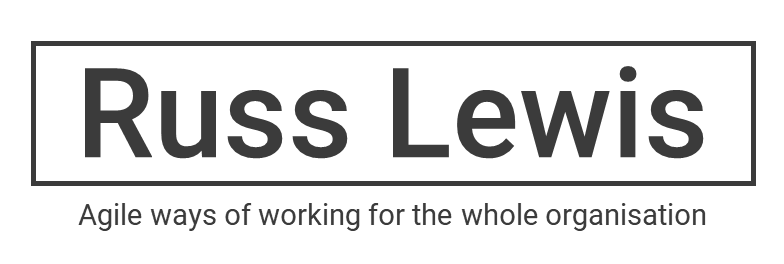Don’t be Fooled by this Agile Craze
If you are in a management or leadership role, the best way to help an agile team succeed is to learn what your team needs from you.
Increase Agile Management Beyond the Team
It’s relatively easy to agilise a single team, but the real challenge lies in ensuring that team is able to fulfill its purpose by increasing organisational agility around it. Do that, and you can scale agile as much as you want.
Many times I’ve seen the order to become agile passed-down a chain of command. When there’s no consideration for what it means for individuals in roles outside the agile team, the outcome tends to be frustration rather than improvement.
Of course, development teams should be agile, that’s been well-established, but agile, and in particular Scrum, XP and SAFe solve very specific engineering problems. Their view of the organisation is principally upwards rather than management's more holistic view, and comprises rules and obstacles. Their solution is to make a different and better set of rules that don’t have those obstacles.
Behold, the Product Owner
In the case of Scrum, these rules particularly address the frustrations of the software development team. With alchemical simplicity the rules transmute all management, external stakeholders, distractions and demands into a single representative of the business – the Product Owner. But don’t be fooled by this simplicity. The Product Owner works for the Team and takes 100% of the responsibility for the project’s success!
Agile is an engineering solution to an engineering problem, designed for developers not managers.
The world is going Agile Crazy.
Agile is all the rage now and the cry ‘all Projects must be Agile’ has been heard in boardrooms of newspaper conglomerates and builder’s merchants, clothes retailers and rail operators. Even the UK government has been promoting agile practices as part of their initiative to improve digital services. Actually, their resources are excellent.
Plenty of reports show that agile projects can significantly improve quality, adaptability and satisfaction whilst eliminating overrun and over-spending. No surprise then that smart C-level executives of medium and large organisations want plenty of that action. And therein lies the problem: many medium to large-sized organisations developed along the traditional model of hierarchical management which agile was intended to re-engineer.
Agile seems like a religion at times
Ken Schwaber, founder of break-away group scrum.org and one of the (two) fathers of Scrum, is fanatical in his insistence on adhering to the ‘rules of the game’. Jeff Sutherland, the other father, seems more responsive and accepting of other practices. Yet whenever I attend agile events, especially in the US, there is such a collective enthusiasm that somehow it feels right to insist that customers follow the rules of Scrum as if it were just a game.
Organisations are Expensive, Complex and Long-lived Entities, unlike Games of Rugby
Whilst the Scrum team is trying to work to the beat of its monthly sprint drum, the infrastructure team has jobs whose timings are controlled by software releases and market closures. This is a key area of interaction, as the development team must rely on infrastructure for releasing software to production, yet there’s often a fundamental disconnect between the two. It’s rare that development and infrastructure can align themselves together to jointly benefit the organisation.
Managers still have to carry-out appraisals for their direct reports, and managers with budgets still have to prepare forecasts for next year. In many ‘agile’ organisations Project Managers still report on progress made according to a plan that doesn't really exist!
There’s a Quiet Revolution Going-on
Whilst some organisations are heading along a bumpy path, I am delighted to be meeting and working with executives and managers who are determined to nurture their teams. These enlightened leaders speak a language of shared ownership, of learning from mistakes and continual improvement. As leaders, they don’t hesitate to serve individuals by understanding their needs and helping their professional development. They reward co-operation and build on success.
These managers are increasing the agility of our organisations. I'm happy to be working with them.
This post first appeared as a blog on the Storm Consulting website.







